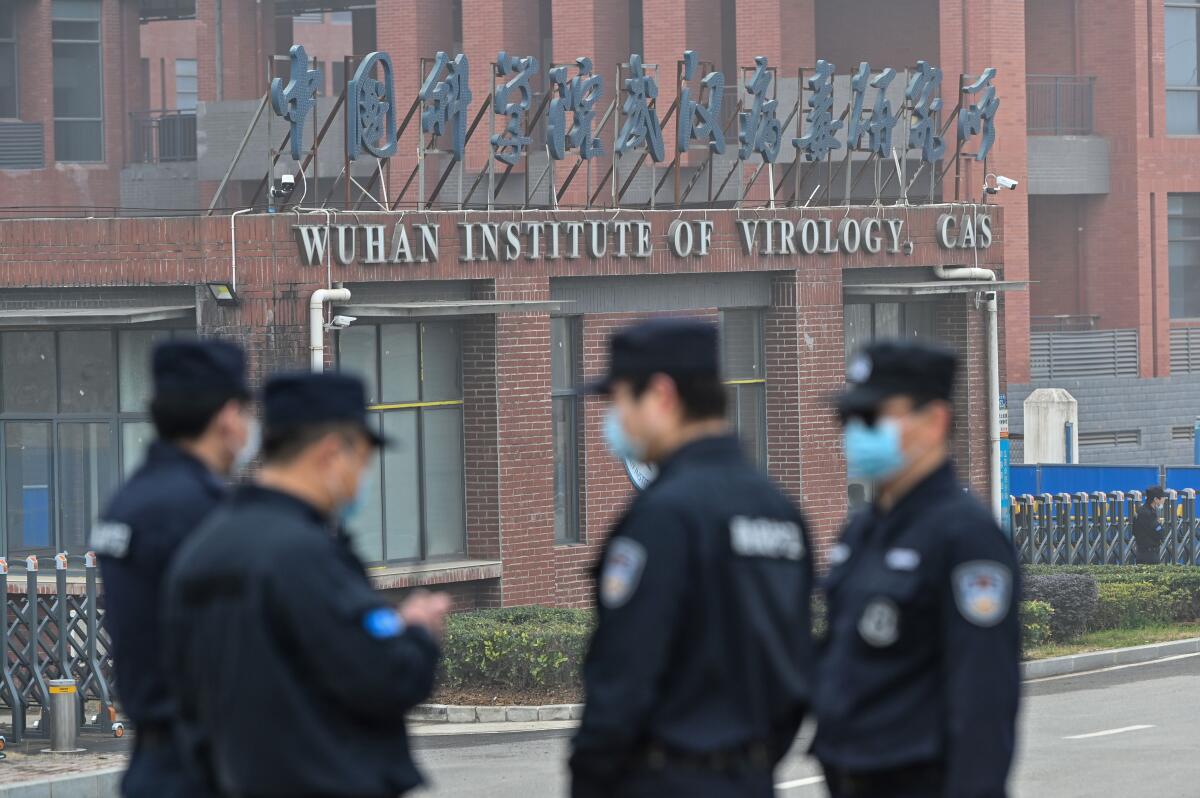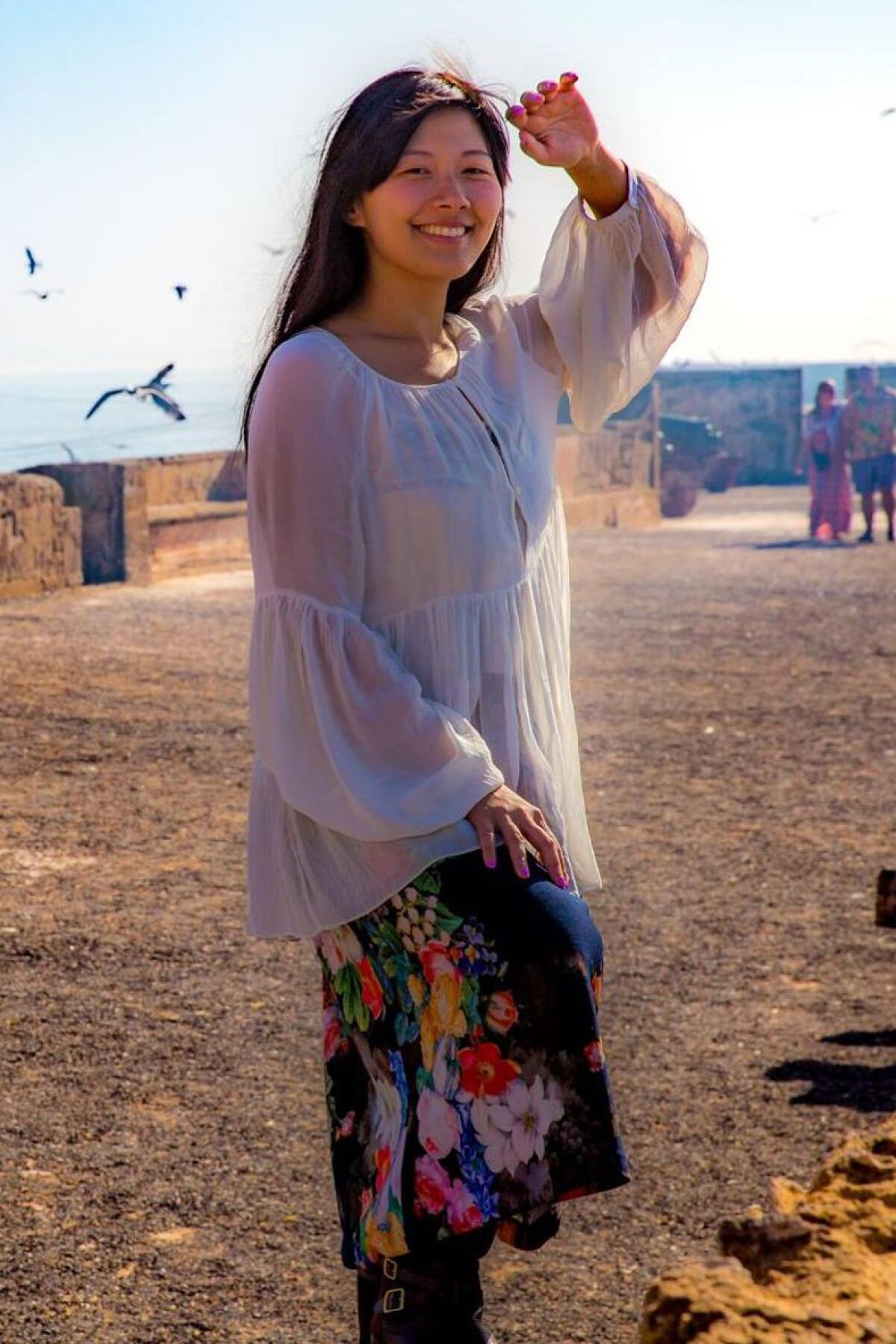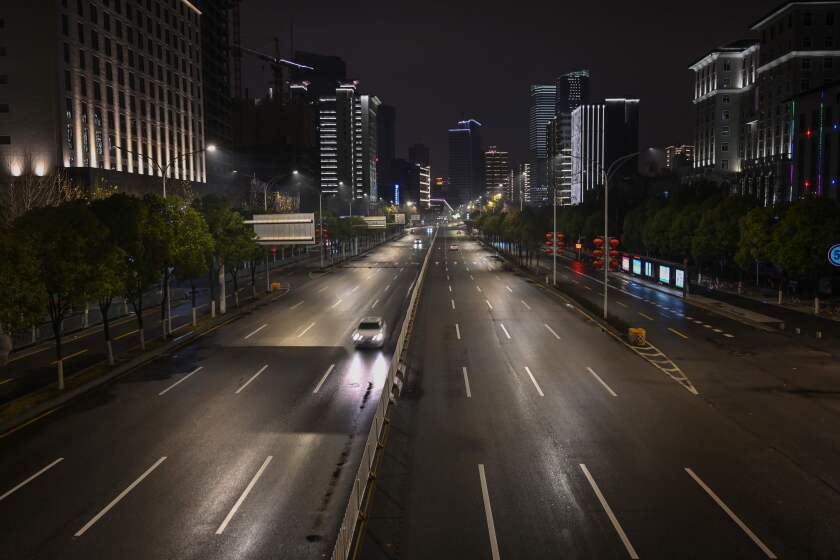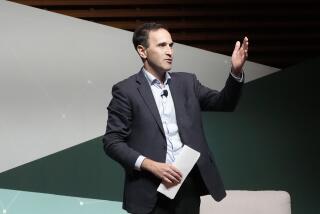These authors wanted to push the COVID-19 lab-leak theory. Instead they exposed its weaknesses

- Share via
On the Shelf
'Viral: The Search for the Origin of Covid-19'
By Alina Chan and Matt Ridley
Harper: 416 pages, $30
If you buy books linked on our site, The Times may earn a commission from Bookshop.org, whose fees support independent bookstores.
Alina Chan, a molecular biologist at the Broad Institute of MIT and Harvard, has become one of the leading exponents of the hypothesis that the virus causing the COVID-19 pandemic leaked from a Chinese laboratory. Matt Ridley, a much-published science writer and member of the British House of Lords, emerged as a leading climate change denier with a provocative Wall Street Journal op-ed in 2014.
The book they joined forces to write, “Viral: The Search for the Origin of COVID-19,” presents the case for the lab-leak hypothesis, presumably with the secondary goal of establishing the authors as the preeminent truth-tellers on the topic. (The book’s epilogue is titled “Truth Will Out,” a line from “The Merchant of Venice.”)
“Viral” comes to bookstores amid a wave of hype. Its publisher describes it as a “uniquely insightful book” in which the authors come “tantalizingly close to a shaft that leads to the light” about the pandemic’s origins.
In reality, however, “Viral” is a laboratory-perfect example of how not to write about a scientific issue. The authors rely less on the scientists doing the painstaking work to unearth the virus’ origin than on self-described sleuths who broadcast their dubious claims, sometimes anonymously, on social media. In the end, Chan and Ridley spotlight all the shortcomings of the hypothesis they set out to defend.

As Chan and Ridley acknowledge, determining the origin of the virus technically known as SARS-CoV-2 (or SARS2, for short) is of paramount importance to humanity. “If we do not find out how this pandemic began,” they write, “we are ill-equipped to know when, where and how the next pandemic may start.”
Yet if the authors were truly concerned with the origin of COVID-19, they would give proper due to the prevailing scientific judgment about it: that COVID was “zoonotic,” spilling over from infected animals to humans via natural contact the way most viruses known to science have reached humankind. As virologists reported this summer, the emergence of SARS2 bears unmistakable signatures of those prior zoonotic events. Chan and Ridley, however, pay insufficient attention to the scientific consensus, or to the significant research findings around which it has coalesced.
Column: A declassified government report offers no support for the lab-leak theory of COVID’s origin
For months, adherents of the theory that COVID-19 originated in a Chinese government laboratory have hoped that an assessment President Biden ordered from the nation’s intelligence agencies would validate their suspicions. Their hopes are now dashed.
The hypothesis that the virus leaked from the Wuhan Institute of Virology, in the same city where the pandemic first emerged, was initially championed in 2020 by ideologues in the State Department under then-President Trump. For them, blaming a pandemic on the Chinese government and its laboratories served the dual purposes of scoring points against a geopolitical adversary and distracting attention from the Trump administration’s incompetent response.
In its original form, the theory held that the Chinese deliberately created the virus as a biological weapon. Over time, it devolved into a claim that the virus originated in experiments to enhance the infectivity of microbes being studied in the lab (so-called gain-of-function experiments) — and ultimately to the proposition that researchers at the institute unwittingly became infected while doing fieldwork and carried the virus into the institute, from which it escaped through inattention. Blaming the Chinese government for the pandemic has remained the one unchanging element of the hypothesis.
Get the latest from Michael Hiltzik
Commentary on economics and more from a Pulitzer Prize winner.
You may occasionally receive promotional content from the Los Angeles Times.
No evidence whatsoever has ever been produced for any of these versions. All that remains is an argument based on unsupported conjecture and the absence of evidence: Why don’t we know more about the work at the Wuhan Institute, unless the Chinese government is hiding its guilt?
It’s true that the Chinese government has obstructed investigations focused on the virology lab, but basing a conspiracy theory on government secrecy is a dead end. The Chinese are secretive about all things, and in any case, there isn’t a government on Earth, including the U.S., that welcomes snooping into its operations with the probable goal of laying blame.

The authors make much of the location of the virology institute in the city where the outbreak was identified. Lab-leak theorists call this “circumstantial evidence,” but it’s not much of a circumstance. Wuhan is a metropolis of more than 9 million, comparable to New York City or Los Angeles, and a major transit and trade crossroads for southeastern China. In Wuhan and its environs, interactions between consumers and animals being sold at so-called wet markets are common.
It’s true that dangerous microbes have escaped from research labs in the past, though none have triggered a pandemic. But that doesn’t warrant the conclusion that the same thing happened in Wuhan, especially with scientific findings weighing heavily in favor of a zoonotic spillover.
The documentary “Totally Under Control,” directed by Alex Gibney, Suzanne Hillinger and Ophelia Harutyunyan, is a damning indictment of corruption and cronyism in the executive branch.
“Viral” is built on vague innuendo, dressed up with assertions that may strike laypeople as plausible but have long since been debunked by experienced virologists. An entire chapter, for example, is devoted to the “furin cleavage site,” a feature of the virus’ structure through which the enzyme furin makes the spikes on its surface — which it uses to penetrate and infect healthy cells — more effective.
The furin site was originally described by lab-leak advocates as so unusual that it could have been placed there only by humans. Virologists have since determined that the feature is not all that rare in viruses similar to SARS2, and in any case, it could have emerged through natural evolutionary processes well known to experts. Chan and Ridley place a heads-I-win-tails-you-lose gloss on these findings, writing that if the site “proves to have been inserted artificially, it confirms that the virus was in a laboratory and was altered. ... If, on the other hand, the furin cleavage site proves to be natural, it still says nothing about where the virus came from.” Why write about it at all, then?
Contrary to the curiosity-piquing subtitle, the authors don’t tell us much that is illuminating about how virologists actually search for the origins of new viruses. They don’t appear to have spent much time, if any, watching experts at work in the lab. At least that might have been interesting as an explication of scientific methods. Instead, what Chan and Ridley have done is place a conspiracy theory between hardcovers to masquerade as sober scientific inquiry.

Spoiler alert: Near the end of their book, Chan and Ridley acknowledge that they have conducted a wild goose chase. “The reader may want to know what the authors of this book think happened,” they write. “Of course, we do not know for sure. ... We have tried to lay out the evidence and follow it wherever it leads, but it has not led us to a definite conclusion.” After 400-odd pages of argument, learning that the authors don’t even emerge with the courage of their own convictions may leave readers feeling cheated.
That points to the chief unanswered question raised by “Viral”: Who thought this book was necessary at this point in time? In virological and epidemiological terms, the search for the origin of COVID-19 is in its infancy. Experts in those fields know that the critical links, the original animal source and the intermediate species that may have been the direct transmitter to humans, may never be identified; similar inquiries have taken years, and some have never reached a conclusion.
The lab-leak theory, if proved, would point to the need to tighten biosecurity at laboratories all over the world. The zoonotic theory would remind us that human interactions with wildlife, a common occurrence in rural China, need to be closely regulated. The shame of “Viral” is that it promotes a groundless theory that threatens to lead policymakers, as well as members of the public, down the wrong road, to humankind’s enduring detriment.
Authors Geoff Manaugh and Nicola Twilley on ‘Until Proven Safe,’ a history of disease quarantine and a study of our failure to properly deploy it.
More to Read
Get the latest from Michael Hiltzik
Commentary on economics and more from a Pulitzer Prize winner.
You may occasionally receive promotional content from the Los Angeles Times.









